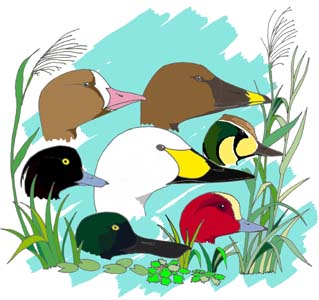
JOGA17
(2014)
| [ 重要生息地ネットワーク ] | [ 日本鳥学会 ] | [ 環境省「インターネット自然研究所」 ] |

Japan Ornithologist Group (Anatidae) for East Asian - Australasian Flyway Partnership (JOGA)
17th annual meeting
2014-08-22, Rikkyo Univ., Tokyo
Conveners: Watanabe T & Kamiya K
We have continued to discuss the ecology and conservation of Anatidae for more than 10 years in the Japanese Ornithological Congress.
At the 2014 meeting, we plan to introduce two topics to clarify the relationship between water plants and waterfowl, and would like to make this discussion the theme.
Tubers, forming on the rhizomes of the Sago Pondweed, have long been known to be a food for waterfowl. In Europe, Sago Pondweed has been discussed as an important resource for Tundra Swans in migration. In the process of foraging, the Tundra Swan also helps broadcast the seeds of the Sago Pondweed.
Foraging pressure by swans on Z. latifolia rhizomes in winter greatly influenced the growth of the plants above the ground in the subsequent spring season. In shallow water areas, it is difficult for waterfowl to forage the rhizomes; therefore the rhizomes of Z. latifolia remained unsprouted in the spring. In deeper water, waterfowl forging on the rhizomes resulted in rhizomes sprouting and producing stalks.
| [ 重要生息地ネットワーク ] | [ 日本鳥学会 ] | [ 環境省「インターネット自然研究所」 ] |
URL: http://www.jawgp.org/anet/jg020en.htm
Last update: 15 Aug. 2014, JOGA.